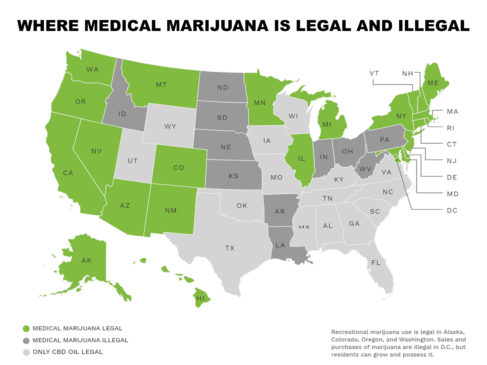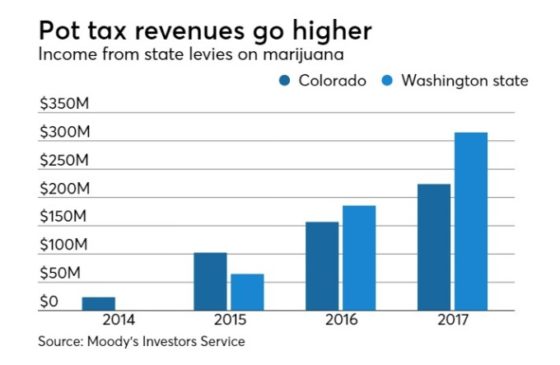Is the jury still out on the effects of legalised cannabis in North America? That is the debate that has been taking place among London School of Economics (LSE) bloggers. After Wayne Hall published a blog claiming that indeed, the jury is still out, Dr Daniel Bear replied wit a meticulous refutation, concluding that legalisation ‘is working pretty well’.
Hall, a Professor at the Centre for Youth Substance Abuse Research (CYSAR) at the University of Queensland, writes that ‘despite growing support from the public and some state governments, there is simply not enough evidence yet to answer that question definitively’.
 Wayne Hall, left, and Dr Daniel Bear
Wayne Hall, left, and Dr Daniel Bear
One reason for this, he says quite fairly, is that while cannabis remains illegal in terms of national policy, the development of the industry is restricted as many who would otherwise invest submit to the fear of federal prosecution. Alongside this, supply is still catching up slowly with demand.
There is also only a relatively short period to analyse. Washington State and Colorado voted to legalise cannabis use by adults in 2012. Oregon and Alaska followed in 2014 and California, Maine, Massachusetts and Nevada in 2016.
Other than that he makes a number of assertions supporting his overall conclusion:
- Although studies have found no increase in adolescent cannabis use, adolescents do see cannabis use as less risky than they used to do, which could encourage them to use cannabis
- There is more consistent evidence that regular cannabis use has increased among adult users
- Studies of the effects of legalisation on impaired driving are also conflicting
- The risk of dependence could increase because more potent cannabis products (e.g. concentrates with 70 percent THC) are available at lower prices. He says dependence on cannabis increased in the Netherlands in the 1970s, but that it was lower than dependence on alcohol, tobacco or heroin in the early 1990s
- He claims that cannabis advocates make causal associations ‘when it favours their case while discounting similar interpretations of the association between regular cannabis use and various poor psychosocial outcomes’, citing the example of a fall in opioid deaths in states where cannabis is legal
But Bear, a Professor at Humber College’s School of Social and Community Services, where he teaches Criminal Justice, says that it is clear that legalisation has been positive.
Hall’s analysis, Bear points out in his reply, is too narrow, and therefore incomplete: “Hall’s analysis focused on issues of youth consumption, dependence, and the potential substitution of alcohol for cannabis. These are his areas of specialization and his assertions have no factual errors as far as I can tell. However, examining the issues not covered by Hall provides a more complete view of legalized cannabis in North America. When we take Hall’s assertion and incorporate the impact on crime rates, decrease in drug arrests, and other impacts the situation looks very different.

The only concerning statistic Hall can point to in this area of youth consumpumption is a reduction in how harmful young people perceived cannabis to be. Bear says: “In previous interviews Hall has stated that, ‘The perception that cannabis is a safe drug is a mistaken reaction to a past history of exaggeration of its health risks’. I can attest that as a child in the 80’s a DARE officer told me that heroin and cannabis were equally deadly and equally addictive.
“Looking at the study Hall cites, the numbers seem to indicate that we are seeing young people more accurately identify the level of risk associated with cannabis consumption, and only a small percentage believe cannabis is harmless.”
Hall did not look at crime or at how regulation provides a new funding stream in the form of tax revenue and business revenue, “money that would have gone to the black market”, says Bear. “Colorado collected more than $247m in cannabis tax revenue in 2017 from $1.5bn in total sales. That money is not flowing to illegal growers, smugglers, and dealers who operate outside the law and often have to resort to violence if wronged in a transaction.
“The tax revenue has meant that each year $40m more goes towards building new schools in Colorado, $6m more goes to adding health professionals in to schools, and there are additional millions for mental health care, drug education, addiction support and other worthwhile programmes. Colorado police services were recently allocated $21m to help them divert individuals with addiction and other mental health issues away from the criminal justice system. Low-level cannabis arrests make up a large percentage of most police services’ drugs work, and legalisation means that officers can be redirected to more pressing community concerns.

“New research shows that there have been massive drops in the arrest rate for cannabis possession in the year following legalization in Colorado and Washington. These reductions were six times greater than the average reduction in the arrest rate in the decade preceding legalization. In 2004, UK-based research identified that a typical cannabis possession arrest takes five hours of an officer’s time, and the significant reduction in hours by police officers may be part of the reason why clearance rates for other types of crimes also improved after legalisation.
“Not only do drug arrests fall after legalization, but other crime numbers improve as well. Violent crime fell by 10 percent in Washington State after legalisation. Research has also identified that crime rates in neighborhoods with retail cannabis stores see a localised drop crime rates due, in part, to the disruption of illicit drug markets.”
Bear cites Goldstein’s tripartite model as a possible explanation for this. Writing in 1985, Paul Goldstein found that many of the deaths related to drug violence happened due to the prohibitionist system used to regulate drugs. What he called the ‘systemic model’ included violence perpetrated by gangs competing for territory and distribution routes. “When the market operates within the law the courts become the battlegrounds, not neighborhood street corners,” says Bear.
Bear points to evidence that there may even have been a benefit to housing prices, with retail cannabis laws leading to an estimated 6% increase in the value of homes by increasing demand in states that have legalised cannabis.
“While there has been some concern about illegal growing operations in Colorado that export their cannabis to other states, these are not part of the legal system and are the result of overly lax regulation that should not be a problem in Canada or other jurisdictions.”
Bear concludes: “Saying that the jury is still out on cannabis legalization makes it sound like we’re waiting for something to go wrong. But it has been four years since Colorado and Washington began this experiment and legalisation appears to be working well when we consider the full picture.
“The benefits of legalisation are being felt far beyond the population that consumes cannabis. Legalisation is creating economic opportunities, improved educational opportunities, and ending the unwarranted criminalisation of tens of thousands of citizens each year for possession a drug that is arguably less harmful to the population than alcohol or tobacco. Legalisation comes with new challenges, and old concerns, but when evaluated in its entirety, the evidence shows it is working pretty well.”




